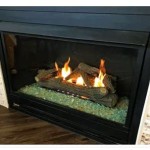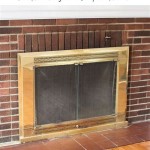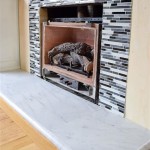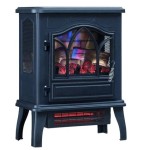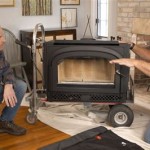Stand-Alone Fireplaces: A Comprehensive Guide
Stand-alone fireplaces, also known as freestanding fireplaces, offer a flexible and aesthetically pleasing alternative to traditional built-in fireplaces. These units provide warmth and ambiance without the need for extensive construction or renovation. They are an increasingly popular choice for homeowners seeking to add a focal point to their living space, master bedroom, or even outdoor areas. This article will explore the various aspects of stand-alone fireplaces, including their types, benefits, considerations for installation, and maintenance requirements.
Types of Stand-Alone Fireplaces
The market offers a diverse range of stand-alone fireplaces, each with its own unique fuel source and design characteristics. Understanding these differences is crucial for selecting the best option for individual needs and preferences.
Wood-Burning Stand-Alone Fireplaces: These fireplaces offer the classic appeal and authentic crackling sound that many associate with a traditional fire. They typically consist of a cast iron or steel firebox, a chimney or flue for venting smoke, and a hearth or base for stability. Wood-burning models require a readily available supply of seasoned firewood and regular cleaning to remove creosote buildup. Due to environmental concerns and regulations in some areas, wood-burning fireplaces may be subject to restrictions or require specific emissions certifications. Proper ventilation is paramount to prevent smoke from entering the home.
Gas Stand-Alone Fireplaces: Gas fireplaces offer convenience and ease of use. They are typically fueled by natural gas or propane and can be ignited with the push of a button. Gas fireplaces often feature realistic artificial logs and adjustable flame heights, allowing for control over heat output and ambiance. Venting options include direct vent, which vents combustion gases directly outside, and vent-free, which requires no chimney or flue but may be subject to stricter regulations due to potential carbon monoxide risks. Proper installation by a qualified technician is essential to ensure safe and efficient operation.
Electric Stand-Alone Fireplaces: Electric fireplaces are a highly convenient and versatile option. They require no venting and can be easily moved from room to room. Electric fireplaces use electric heating elements to generate heat and often incorporate realistic flame effects to mimic the appearance of a real fire. They are generally more energy-efficient than wood-burning or gas fireplaces and offer a safe and clean alternative for those who want the aesthetic without the hassle of fuel or venting. While they may not provide the same level of heat output as other types, they are well-suited for supplemental heating in smaller spaces.
Ethanol Stand-Alone Fireplaces: Ethanol fireplaces burn denatured alcohol, a renewable fuel source. These fireplaces are vent-free and produce a clean-burning flame without emitting harmful gases or smoke. Ethanol fireplaces are available in a variety of styles, from tabletop models to larger freestanding units. They are relatively easy to install and maintain, but the cost of ethanol fuel can be higher than other options. Ethanol fireplaces provide a real flame, but may not always be a primary heating source.
Benefits of Choosing a Stand-Alone Fireplace
Stand-alone fireplaces present several advantages over traditional built-in models, making them an attractive option for many homeowners.
Flexibility and Portability: One of the primary benefits of a stand-alone fireplace is its flexibility. These units can be easily moved and repositioned, allowing homeowners to experiment with different layouts and aesthetics. This also makes them suitable for renters or those who anticipate moving in the future. The ability to relocate the fireplace is a significant advantage over permanently installed options. Furthermore, some models are designed for outdoor use, extending the enjoyment of a fireplace to patios and decks.
Simplified Installation: Stand-alone fireplaces typically require less extensive installation than built-in models. Electric and ethanol fireplaces, in particular, can be set up quickly and easily without the need for venting or gas lines. Gas and wood-burning models will require professional installation for venting and fuel connections, but the overall process is generally less disruptive and costly than building a traditional fireplace from scratch. The simplified installation process can save time and money.
Aesthetic Versatility: Stand-alone fireplaces come in a wide range of styles, from traditional to contemporary, allowing homeowners to find a model that complements their existing décor. They can serve as a focal point in any room, adding warmth and visual interest. The variety of designs and finishes ensures that there is a stand-alone fireplace to suit any taste and aesthetic preference. They can become a statement piece to elevate the look of a space.
Considerations for Installation and Maintenance
Regardless of the type of stand-alone fireplace chosen, proper installation and regular maintenance are crucial for ensuring safe and efficient operation.
Safety Precautions: Safety should always be the top priority when installing and using any type of fireplace. Wood-burning fireplaces require proper chimney cleaning to prevent creosote buildup, which can lead to chimney fires. Gas fireplaces should be installed by a qualified technician to ensure proper venting and gas connections. Electric fireplaces should be plugged into a grounded outlet and never left unattended. Ethanol fireplaces should be used in well-ventilated areas and away from flammable materials. Adhering to safety guidelines is non-negotiable for preventing accidents.
Venting Requirements: The venting requirements for stand-alone fireplaces vary depending on the fuel source. Wood-burning and gas fireplaces require proper venting to remove combustion gases. Direct-vent gas fireplaces vent directly outside, while vent-free models require careful consideration of ventilation and carbon monoxide safety. Electric and ethanol fireplaces do not require venting, making them a more convenient option in some cases. Understanding and meeting the venting requirements is essential for safe and compliant operation.
Maintenance Procedures: Regular maintenance is essential for prolonging the lifespan and ensuring the safe operation of a stand-alone fireplace. Wood-burning fireplaces require regular chimney cleaning and ash removal. Gas fireplaces should be inspected annually by a qualified technician to check for gas leaks and ensure proper burner function. Electric fireplaces may require occasional cleaning of the heating element and fan. Ethanol fireplaces require cleaning of the burner and surrounding area after each use. Routine maintenance is important for optimal performance and safety.

Freestanding Gas Fireplaces Fergus Fireplace

Ortal Stand Alone Collection Luxury Fires Robey S

Top 5 Benefits Of Freestanding Fireplaces

Modern Free Standing Fireplaces Stand Alone

How To Install A Freestanding Fireplace 5 Easy Steps L Esseiale

Studio 2 Freestanding Wood Burning Stove Stovax Stoves

How To Install A Freestanding Fireplace 5 Easy Steps L Esseiale

Pin On Park Ave S 19a B

ᑕ❶ᑐ Freestanding Electric Fireplaces For Tiny Spaces
Supreme Freestanding Indoor Gas Fireplace Heat Glo
Related Posts


